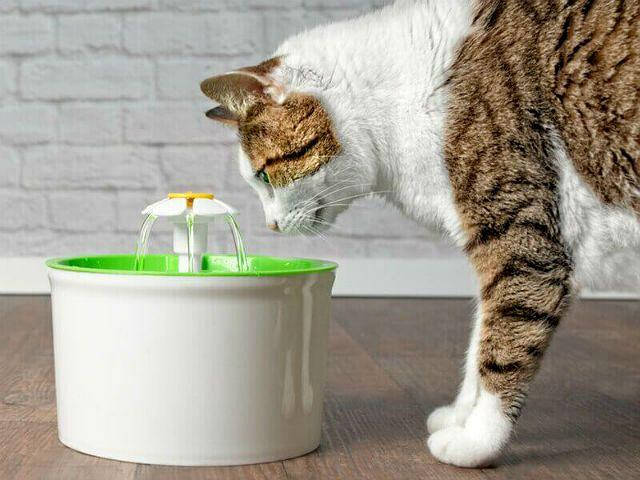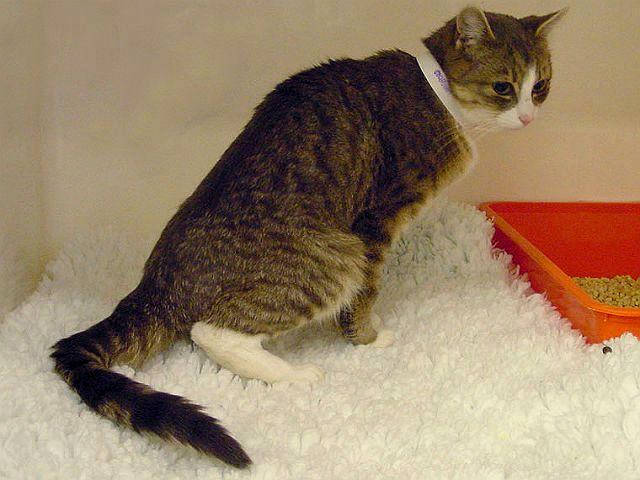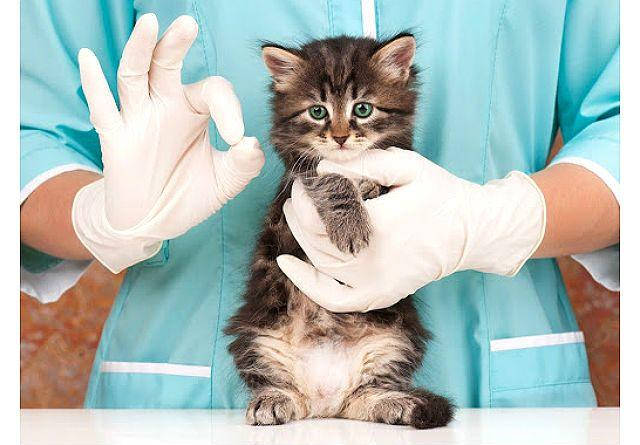Why do cats develop cystitis? The main causes are considered to be the following:
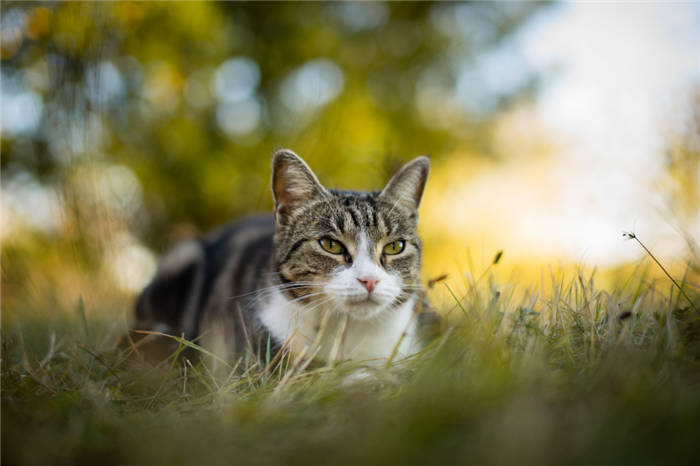
- Treating a cat for cystitis. We do not know what to do next! Please help.
- What is cystitis?
- Types of cystitis
- Cystitis and treatments. Let's dot the i's and cross the t's.
- Types of cystitis in cats
- Cystitis symptoms
- Diagnosing cystitis
- Treatment of bladder inflammation
- Causes of occurrence
- Signs and symptoms of cystitis
- Diagnosis at the clinic
- First aid and treatment
- Procedures at the veterinary clinic
- Medicinal preparations
- Prevention of the disease at home
- Treatment and prognosis
- Diet Therapy
- Prevention of the disease
- Improvement of living conditions
- Improvement of emotional state
- Increased water intake
Treating a cat for cystitis. We do not know what to do next! Please help.
1. Cat, 10 years old, not purebred, not neutered.
2. Dry food Viskas, wet Felix.
3. Has not been vaccinated
4. On January 10, 2017, the first symptoms appeared
5. In the morning traces of blood were found on the bathtub (cat urinated in the bathroom). Sat down to pee every 10 minutes, peeing a few drops of blood. Blood in the urine was observed for the first time, no health problems and never
a) appetite decreased
b) water intake increased
b) usual activity
c) urination difficult
d) stools the day before were as usual hard, dark brown
e) vomiting was not present
Called a veterinary emergency room. Veterinarian performed catheterization under anesthesia. During catheterization, a bladder stone was propalpated. We washed the bladder with saline (there was blood and, according to the vet, sand). While the cat was coming out of anesthesia he was urinating involuntarily (there was blood in his urine). The vet administered a styptic shot.
Two hours after the anesthesia the cat ate, threw up. He peed and pooped two times. A couple of hours later, he started drinking. Started to pee every hour (with blood), only once at night.
Doctor's orders:
Papaverine 2ml – 2 times a day – 3 days.
dexamethasone 2 ml – 1 a day – 3 days
amoxiclav 2ml. – 2pd – 10 days
Food Royal Kanin Urinari (started to feed at once).
In the evening of the same day was made ultrasound and conducted rapid analysis of urine:
leucocytes+++
blood+++
ph 8-8,5
BP 1020
glucose – none
ketones – none.
ULTRASOUND INVESTIGATION
Bladder mucosa is thickened
Suspension (presumably sand) was seen
Filliness is weak
No solid masses were seen
They confirmed cystitis, no stones were seen. They said in words that there was also a problem with the kidneys. We could not describe it in more detail.
On January 11, the cat peed every 2 hours. There was even more blood in the urine than the day before. On the phone, the vet said it was normal. In the evening we contacted another veterinarian, she advised not to inject papaverine and dexamethasone, leave the antibiotic. The cat was lethargic. He was eating and drinking normally. Nettle broth was added to the water.
On January 12, we went to the vet (whom we called in the evening), the vet administered sodium chloride and gave two injections (antibiotic and something else). At home, the cat only peed with blood once, after that there was no more blood in the urine. The cat urinated every four hours without any problems.
On January 13, the patient was given IV fluids (4 medications) + 2 injections. Urination normalized, reduced to 4-5 times a day.
January 14, 15. Urination was normal, without blood, 4-5 times a day. Appetite was normal, slightly decreased (he did not like the new food very much). We did not take him to the IV, because the doctor did not work, we followed the prescriptions:
Furagin 2ml – 2 times a day for 5 days
CatErvin 2ml – 2 times a day.
On January 16, IV was given by the vet + injection.
Urine test
What is cystitis?
The cat bladder is an organ of the excretory system located in the small pelvis of the animal. It receives urine from the kidneys, which is then removed from the body through the urethra. The bladder itself looks like a hollow pouch, lined on the inside with submucosa, and covered by a mucous membrane with many blood vessels.
When emptying, the bladder shrinks, and when filling it, it spreads out, so that the mucous membrane is constantly under stress. If there is inflammation of the mucous membrane, then this pathological process is called cystitis.
Types of cystitis
The acute form has the most pronounced symptoms and causes more suffering for the animal, while cystitis in the chronic form is sometimes almost asymptomatic, but causes considerable damage to the health of the cat. Aggravation of the disease can occur at any time, and, in addition, a constant inflammatory process in the body reduces the immunity of the pet and shortens its life.
That is why you should not be complacent if the cat has no clear manifestations of the disease, but you should constantly follow the recommendations of doctors and monitor its health, observe the recommended feeding regime, etc.
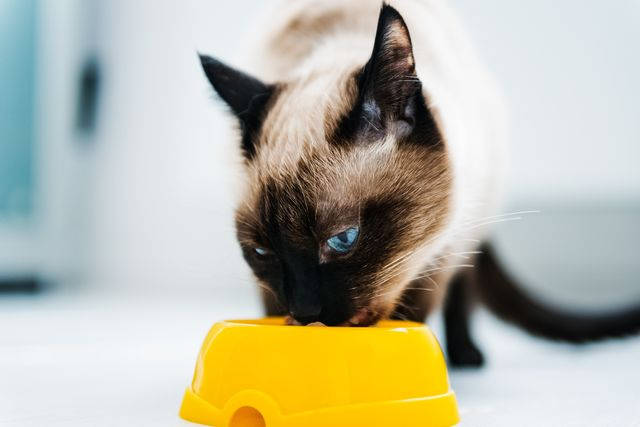
If the blood vessels are damaged as a result of inflammation in the bladder and the cat shows blood in the urine, it means that your pet has hemorrhagic cystitis. It can also occur acutely or chronically. The acute form is dangerous because the animal may have a decrease in hemoglobin, a blood clot or intoxication.
The main cause of the chronic form of hemorrhagic cystitis is cat urolithiasis, which provokes trauma to the mucosa of the bladder.
Idiopathic cystitis in cats causes special difficulties for veterinarians in diagnosis. It would seem that all the symptoms of cystitis are present, but there is no single cause that causes these signs. Therefore, if idiopathic cystitis is suspected, the doctor prescribes a particularly thorough examination.
The host should respond to the first "calls" notifying of problems, because neglected cystitis is treated for a long time and has a high percentage of relapses.
Cystitis and treatments. Let's dot the i's and cross the t's.
So, maybe I'm not the only one wondering, but still, how, and most importantly what to treat cystitis?
Canephorn N
Cantaren
Cat Erwin
Cystone
Stop Cystitis
Some advise Palin.
Toloknianka – reviews are negative.
To relieve spasm Noshpa – "no way", replace it with papaverine.
+ veterinarians prescribe shots like sinulox (thermonuclear imho for cats).
And in the end what to treat cystitis?
There is a specific diagnosis based on ultrasound and urinalysis.
What to do next?
After a course of antibiotics, after which a week is again repeated sitting on the potty and squeezing a drop at a time…
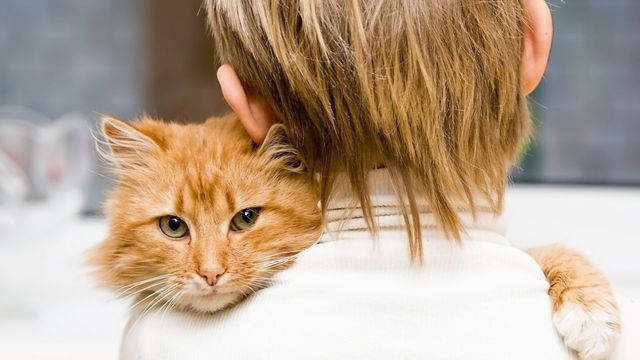
I took a course of antibiotics, after which in a week again repeated sitting on the potty and squeezing a drop.
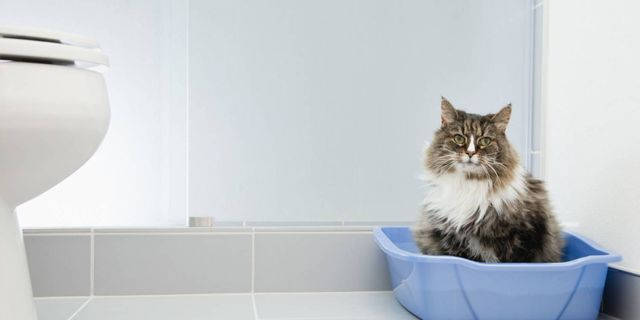
I've posted it somewhere before. It's not even about that.
The topic of WHAT TO TREAT?
Because of the above mentioned medications in the first post, the doctor did not prescribe us any, saying that after antibiotics, all will pass.
You have to take a urine sample for bacterial culture, microscopy of sediment, and general urinalysis. And it is also desirable to choose an antibiotic to which the bacteria will be sensitive, based on the urinalysis. That is, AB is not selected by trial and error, and not with a finger in the sky, but just like that. If indicated, trichopol can also be prescribed. As strange as it may seem.
Also the composition of salts is checked by tests. A diet is chosen, in order to reduce the formation of salts.
Against the background of antibiotics is mandatory, it is desirable to give phytopreparations. Stop cystitis, Erwin cat, etc. – there are a lot of them now. If you want and if time permits, you can boil your own herbs – decoction of corn stigmas, juniper berries, orthosiphon stamen, erwa woolly. All herbs are not bitter and well tolerated by cats.
Toloknian is strictly forbidden to give to cats. The kidneys are too weak.
Types of cystitis in cats
- Hemorrhagic – runs in an acute form, in the discharge of the pet there is blood;
- serous-catarrhal – characterized by the presence of mucus and mucus in the secretions;
- purulent – characterized by the presence of pus in the urine;
- idiopathic cystitis is difficult to study because it does not depend on any factors and occurs in rare cases.
Depending on the course of the disease, acute and chronic cystitis are distinguished. The first in most cases flows into the second, even with complete cure. The chronic form requires special attention to the pet, because provoke the aggravation may even provoke the slightest misstep, such as a slight change in diet or a draft in the summer.
Cystitis symptoms
The main sign of cystitis in cats is pain. Because of the severe pain, the whiskered pet's behavior changes:
- The cat may go to the toilet anywhere in the house, even if it is accustomed to the litter box;
- Because of the pain syndrome during urination, the cat will make a corresponding complaining sound;
- After the cat goes to the toilet, its gait changes – it bends its back a little and seems to "drag" its legs;
- the cat has more frequent urge to urinate;
- The cat may not move for long periods of time;
- The cat often licks its crotch.
Because of the painful abdomen, the cat does not allow itself to be touched, it lashes out and meows. Gradually other symptoms are added: body temperature rises, bloody or purulent discharge appears from the genitals, the animal refuses to take food, in some cases it has a gag reflex.
Diagnosing cystitis
Only a veterinarian can diagnose cystitis after examining the cat and performing laboratory tests. The examination includes palpation, biochemical, microbiological and cytological analysis of the blood and urine of the animal. It should be remembered that home diagnosis, as well as self-treatment can lead to severe complications.
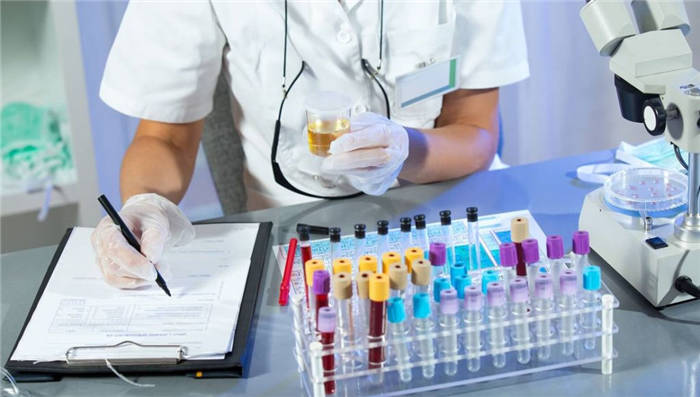
When palpating the lower abdomen through the abdominal wall, the cat is noted for tension and painfulness. The bladder is often found to be empty. If necessary, the doctor prescribes an ultrasound examination. It helps to determine the degree of cystitis in the cat and the presence of additional inclusions in the bladder.
An indicative diagnostic sign is the amount of urine. If the inflammation has not affected the kidneys, the total daily volume of excreted fluid is not reduced. Laboratory examination shows the presence of protein, mucus, epithelial cells, erythrocytes in the urine. The number of leukocytes is significantly elevated in the sick animal. Microbiological culture also confirms the presence of fungal and bacterial flora.
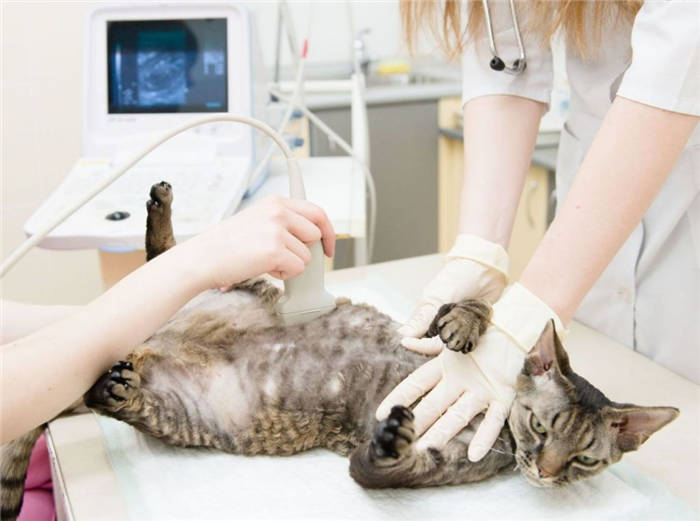
Treatment of bladder inflammation
Comprehensive treatment, including medication and home care, is necessary to restore health. The course should be prescribed by a veterinarian. The list of measures necessarily includes antibacterial therapy, for which tablets or injections are used. When treating cystitis in cats, antispasmodic and analgesic drugs are prescribed in parallel, which relieve the pain syndrome.
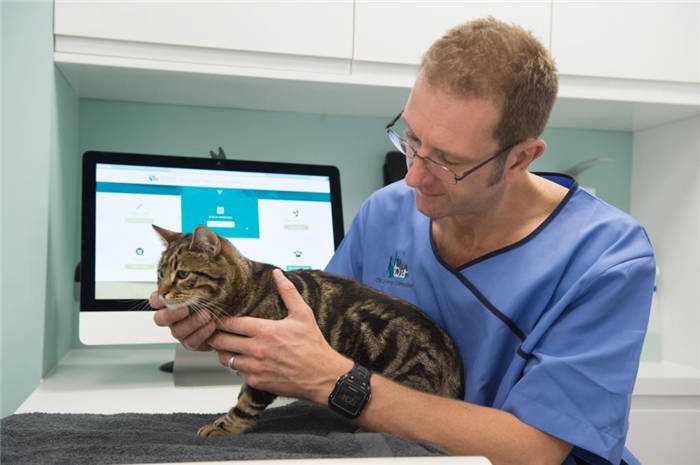
If necessary, the pet is cleared from the infectious contents of the bladder. To do this, warm saline solutions, such as sodium chloride, are injected into the organ cavity with a catheter, followed by antiseptic solutions. Flushing is repeated until the fluid coming out has a clear color. If the body is severely dehydrated, the animal is given IV fluids with physiological solution, which restores the water and mineral balance. In some cases glucose is administered. The number of IVs depends on the volume of urine excreted per day.
It is up to the veterinarian to prescribe medications for cystitis and to treat it, since he has information about the combination of drugs and the cat's state of health. Knowing the presence of concomitant diseases, a specialist can adjust the standard treatment regimen. It is the task of the owner of the furry cat to follow the prescription and create optimal home conditions.
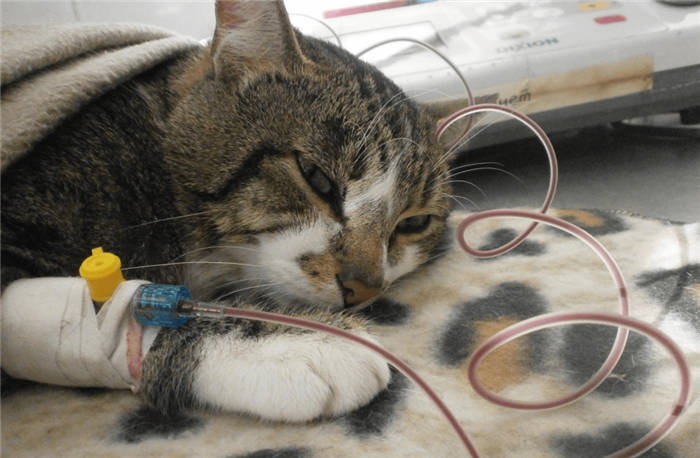
Causes of occurrence
- Kidney disease. Pyelonephritis and glomerulonephritis can also occur in cats (in this case we are talking about the descending nature of the infection).
- Ascending infections – these are usually associated with hypothermia.
- Entry of the infection by the hematogenous or lymphatic route.
Cystitis affects both cats and cats. But manifestations of the disease in cats are more common. This is due to the anatomic features of the body. In cats, the urethra is wide, straight and short, and therefore the salts are almost freely excreted with urine. The urethra of cats is longer, has constrictions and curves, therefore mucous and salt plugs occur in it more often, blocking the passage of urine (obstruction).
Castrated cats are more prone to cystitis, whose urogenital system functions differently than that of non-castrated cats. Blood congestion in the genitals leads to edema and these lead to spasms and retention of urine, stagnation in the bladder, loss of salts, urolithiasis and chronic cystitis.
In veterinary practice, it is noted that the spread of the infectious process does not matter – the principles of cystitis treatment are always the same.
The main thing is to diagnose the disease in time, as treatment in the early stages is much easier. That's the only problem with this – a pet will not complain to you as a person. Therefore, when treating animals, early diagnosis is difficult.
Signs and symptoms of cystitis
The most characteristic symptoms of cystitis are pain when urinating and frequent urges. You will see the domestic cat going "to the toilet" will make pitiful sounds, and angrily scratching the "toilet" with its claws.
Be sure to pay attention to the character of the discharge – at cystitis (especially at severe manifestation of this disease) bloody discharge, impurities of pus, foul-smelling smell may appear in the urine.
When you suspect cystitis in cats, you must necessarily probe the abdomen – in case of an acute form of the disease, the animal will feel a sharp pain in the lower regions (when you press on the cat's stomach, the area closest to the tail will hurt).
Regarding the peculiarities of the course – the disease has an acute and chronic nature. But in any case, this disease is very dangerous for the life and health of the animal, because the option of extensive damage to the urinary system is not excluded.
In addition, the owner should not forget that the microorganisms that cause cystitis in cats or cats can cause inflammatory processes of the urinary system in humans.
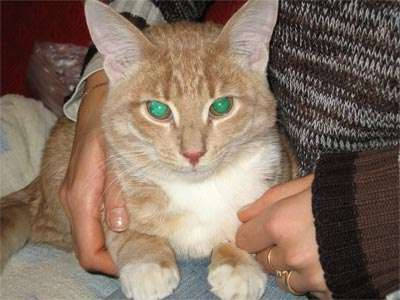
Important note – owners of cats, who prefer to take them outside, are less likely to detect the symptoms of their pets in time (because outside the cat "walks by itself"). In this case, you only realize that there is something wrong with the cat, when it is already lying there mewing pitifully, without showing any desire to do so.
In later stages of the disease, all symptoms are joined by symptoms of intoxication syndrome – A characteristic increase in temperature (measured rectally only) and pronounced vomiting..
If you can see the appearance of edema on the paws, it indicates that nephrotic syndrome has developed – a sign that indicates the lesion of the lower and upper parts of the urinary system.
Diagnosis at the clinic
At the reception, the veterinarian collects a medical history and assesses the condition of the animal by palpation and external examination. In order to make diagnosis is used:
- examination of general blood and urine tests showing abnormal baseline values and the presence of salt crystals;
- A biochemical blood test showing the severity of damage to the urinary system;
- Ultrasound, determining the presence of stones or neoplasms;
- Bacteriological examination of the urine (bacteriological analysis), which is necessary to determine sensitivity to antibiotics and identify the causative agent.
X-rays and cystoscopy are also prescribed. X-rays give a more detailed picture of the condition of the internal organs, while cystoscopy focuses on the inner surface of the bladder.
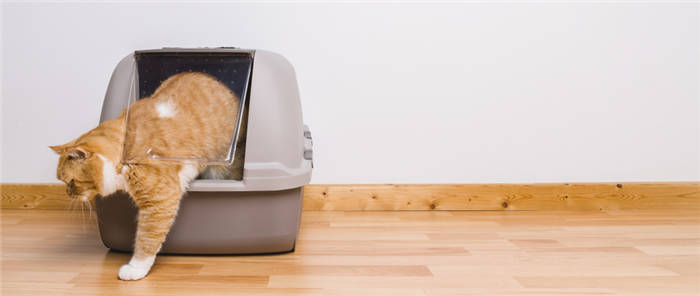
First aid and treatment
If the pain is severe, it is acceptable to use an antispasmodic on its own. The exact dosage is recommended to clarify with the veterinarian. To reduce the load on the kidneys, temporarily refuse to feed, but make sure to consume enough fluids. This will reduce the concentration of urine and flush the bacteria out of the body. Make sure the pet is protected from drafts and away from other animals and family members.
Try to see a doctor right away to prevent the pathology from getting worse. Avoid palpation during self-examination. Excessive pressure increases the tension of the diseased organ and leads to its rupture.
Procedures at the veterinary clinic
In the clinic, the animal is cleaned the ureter with a catheter with antibiotics and antiseptics (boric acid, Furacilin, CatErvin). In cases of severe dehydration they give IV fluids with Ringer's solution or glucose saline.
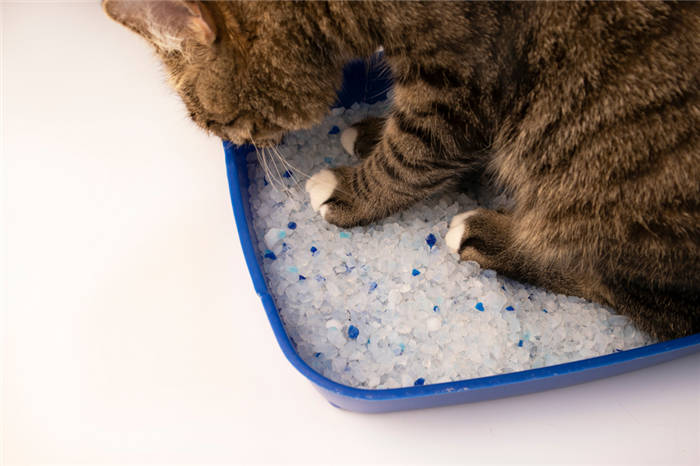
In emergency situations, surgical intervention is performed. Artificial emptying of the bladder is carried out if it is very full and cannot be emptied naturally. In other cases, the veterinarian prescribes a complex of drugs for the treatment of cystitis in cats at home.
Medicinal preparations
When an infection is detected, antibacterial drugs (Amoxiclav, Gentamicin, Levomycetin) are used to treat cystitis in cats. They are prescribed immediately after the examination of bacterial tests. If there is no improvement, immunomodulators (Anandin, Fosprinil, Immunofan) are prescribed to stimulate immune cells.
If there are concomitant diseases, drug therapy focuses on eliminating the underlying cause and the symptoms that have arisen. Spasms and pains are eliminated with antispasmodics (Papaverine, No-Shepa) and analgesics (Baralgin, Analgin). Urotropin or Salol are used to normalize the acidity of the urine. The choice of medication depends on the pH level.
Prevention of the disease at home
Cystitis is one of the most unpleasant and dangerous diseases for cats, so it is better to prevent its occurrence than later long and painful treatment.
- Avoiding overcooling of the pet during a walk or after bathing. No draughts in the house;
- regular cleaning of the litter box and other cat care accessories with disinfectants;
- preventing various injuries and abdominal bruises;
- preparation of a balanced diet according to the age, breed and health of the cat;
- compliance with the drinking regime;
- prevention of stress in the cat. If these situations cannot be avoided, the cat should always be given sedatives;
- Quarterly urinalysis after an acute form of cystitis. If there are no deviations from the norm, this examination is recommended to be performed annually;
- adherence to the vaccination schedule to prevent the infection of infectious diseases and strengthen immunity;
- constant monitoring of the cat's health, regular visits to the veterinarian;
- annual intake of herbal diuretics as recommended by a specialist, if the pet has already encountered this disease.
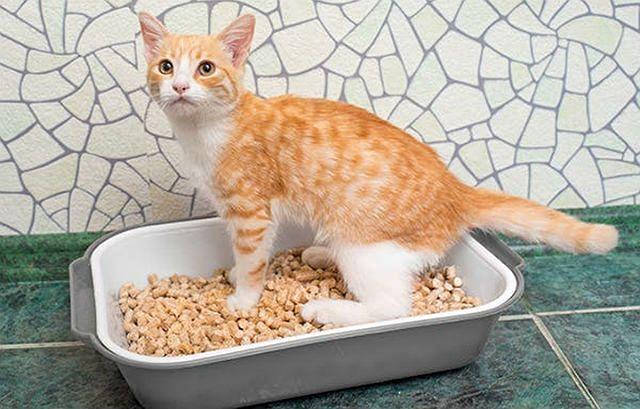
Cystitis in cats is considered one of the most difficult-to-cure, relapsing diseases. Timely and competent therapy will allow you to get rid of this disease in a short time. Owners need to keep a close eye on any changes in the cat's behavior and health.
Compliance with the recommendations for the prevention of urinary tract inflammation will keep the pet from an unpleasant disease and give it a long and happy life.
💡 And finally we remind you that on Veterinarian Online you can get urgent consultation with a specialist at any time and in any convenient way: via chat, messag or by phone (the service is paid). Click here>> to access the service.
Treatment and prognosis
If a cat is not treated for idiopathic cystitis, in most cases the clinical signs disappear on their own after 3-7 days, but later they show relapses.
However, if the animal continues to be affected by triggering factors, the disease will prolong and progress to a severe form requiring the insertion of a catheter.
- Take measures to increase water intake;
- Transfer the animal to a well-chosen diet;
- apply symptomatic therapy;
- provide the cat with a favorable psycho-emotional atmosphere;
- eliminate the root cause of cystitis.
Ensure that the water balance in the animal's body can be maintained by observing the following rules:
The owner should place water bowls and fountains in places where the animal feels most comfortable.
Diet Therapy
A proper diet is a prerequisite for eliminating the symptoms and treating idiopathic cystitis in cats.
- Reducing the concentration of urine;
- elimination of intoxication;
- maintaining the optimal weight of the animal (if necessary, to reduce body weight);
- preventing the formation of kidney stones;
- Providing the cat's body with the necessary vitamins, minerals and polyunsaturated fatty acids.
If the basis of the cat's diet previously consisted of dry food, they should be replaced by canned food and pâté. It is best to choose ready-made super premium or holistic foods.
Foods designed for cats with lower urinary tract problems can be introduced into the diet upon a veterinarian's recommendation. They are balanced to prevent the formation of kidney stones and saturate the cat's body with Omega-3 polyunsaturated fatty acids.
Prevention of the disease
The high probability of transition of idiopathic cystitis into a chronic form and the occurrence of relapses, make the prevention of the disease quite relevant.
Improvement of living conditions
Each cat should have its own place to rest, eat and toilet. Bedding, basket, cabin and other sleeping devices should not be placed in a drafty, cold or noisy room.
Improvement of emotional state
Cats react very painfully to conflicts and a tense atmosphere in the house, the arrival of strangers, moves and the appearance of other pets. Also, idiopathic cystitis can arise from the stress factor caused by punishment for a pet going to the toilet other than the litter box.
- Pay close attention to the emotional atmosphere in the home;
- Give all pets an equal amount of attention and affection;
- Provide each of them with their own toys;
- Take the cat into your arms if you don't know anyone.
If a move is necessary, a veterinarian should be consulted about the advisability of sedation prior to travel.
Increased water intake
It is important to provide a good quality nutritious diet and enough fluids for the cat. In addition to water containers at home, care should be taken to maintain the cat's water balance during walks or travel.
At the first signs of clinical signs of idiopathic cystitis, the pet should immediately be seen by a veterinarian. You should not delay the visit and try to cope with the disease yourself.

